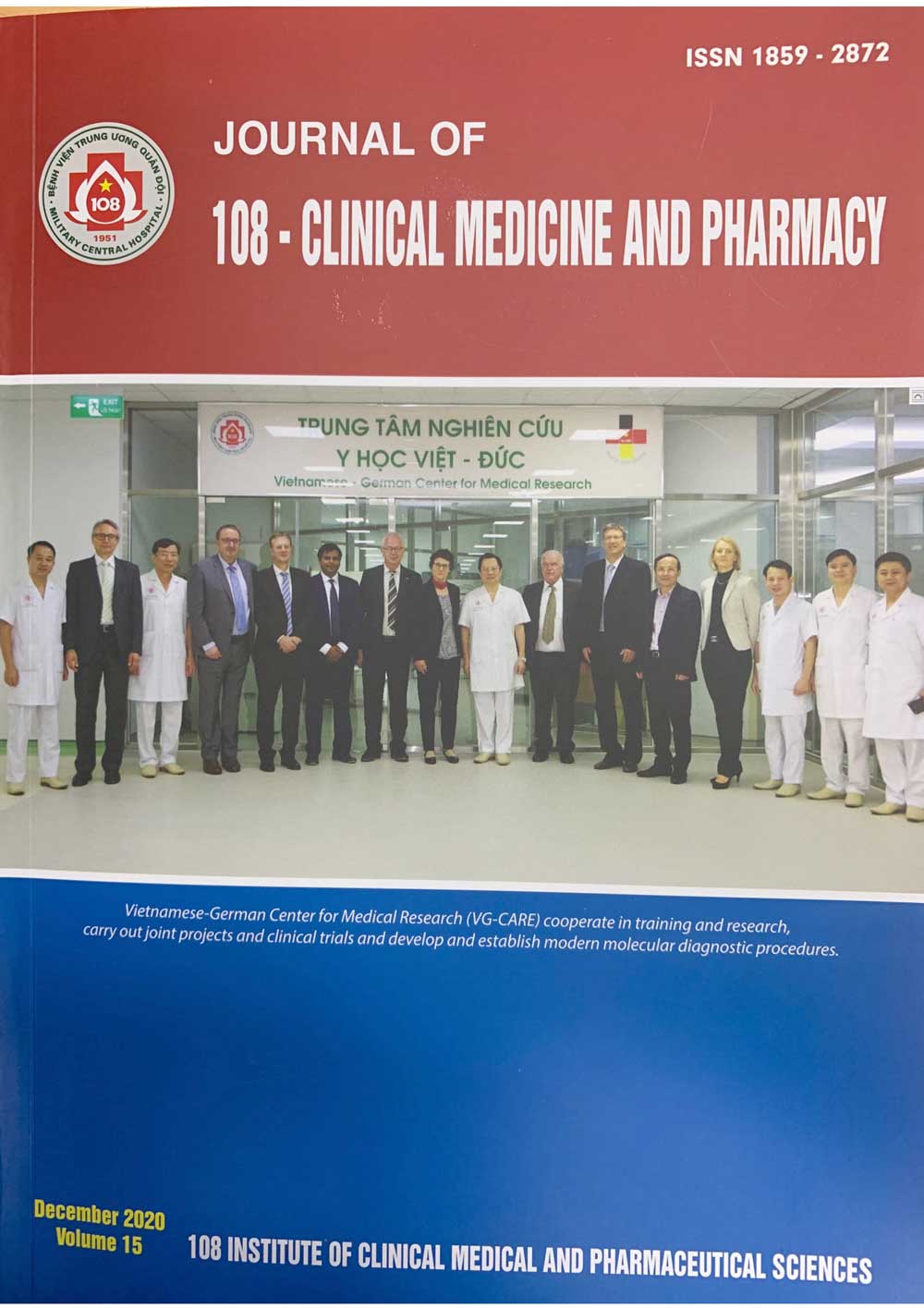A study on clinical characteristics, computed tomography brain imaging, causes and complications of subarachnoid hemorrhage
Main Article Content
Keywords
Abstract
Backgroud: Subarachnoid hemorrhage (SAH) is sudden bleeding into the subarachnoid space. The most common cause of spontaneous SAH is a ruptured aneurysm. Symptoms include sudden, severe headache, usually with loss or impairment of consciousness. It has a lot of dangerous complications especially re-bleeding and vasospasm which are the major causes of death and disability. Objective: To study on clinical characteristics, computed tomography brain imaging, causes and complications of subarachnoid hemorrhage. Subject and method: A cross-sectional prospective study on 202 patients who suffered from subarachnoid hemorrhage admitted to the Stroke Center, 108 Military Central Hospital from June 2018 to January 2020. Result and conclusion: The average age was 60.5 years. The most common age group was among the aged 45-64 years (71.2%). The most common symptoms of SAH was sudden severe headache (98%); neck stiff (86.1%), followed by consciousness disorders (56.9%), systolic blood pressure above 160mmHg (50.5%), focal neurologic deficits (20.3%). The Fisher classification: Grade 1 (4.5%), grade 2 (17.3%), grade 3 (19.3%), grade 4 (58.9%). The ruptured cerebral aneurysm accounted for 89.6% of the causes of SAH. The most common site of aneurysm was in the anterior communicating artery (34.8%), followed by the middle cerebral artery (21.5%) and in the internal carotid artery (16.6%). Posterior cerebral circulation accounted for 12.7%; 4.4% of patients had multiple aneurysms. The most common complications of SAH was cerebral vasospasm (26.2%) and typically occurred between 5 and 7 days after SAH, followed by rebleeding accounted for 7.9%, the most cases occurred within the first 24 hours, acute and subacute hydrocephalus (10.4%), hyponatremia (11.4%) and seizures (5.4%).
Article Details
References
2. Võ Hồng Khôi, Lê Văn Thính, and Nguyễn Chương (2010) Nghiên cứu đặc điểm lâm sàng, cận lâm sàng, nguyên nhân và hướng xử trí một số biến chứng của chảy máu dưới nhện. Tạp chí Thần kinh học, http://hoithankinhhocvietnam.com.vn/ nghien-cuu-dac-diem-lam-sang-can-lam-sang-nguyen-nhan-va-huong-xu-tri-mot-so-bien-chung-cua-chay-mau-duoi-nhen/.
3. Donmez H., Serifov E., Kahriman G et al (2011) Comparison of 16-row multislice CT angiography with conventional angiography for detection and evaluation of intracranial aneurysms. Eur J Radiol 80(2): 455-461.
4. Connolly ES Jr, Rabinstein AA, Carhuapoma JR, et al (2012) Guidelines for the management of aneurysmal subarachnoid hemorrhage: A guideline for healthcare professionals from the American Heart Association/american Stroke Association. Stroke 43: 1711.
5. De Rooij NK, Linn FH, van der Plas JA et al (2007) Incidence of subarachnoid haemorrhage: A systematic review with emphasis on region, age, gender and time trends. J. Neurol. Neurosurg. Psychiatry 78(12): 1365-1372.
6. Frontera JA, Claassen J, Schmidt JM et al (2006) Prediction of symptomatic vasospasm after subarachnoid hemorrhage: The modified fisher scale. Neurosurgery 59(1): 21-27.
7. Miikka K, Riku K, and Behnam A (1993) Size and location of ruptured intracranial aneurysms: Consecutive series of 1993 hospital-admitted patients. Journal of Neurosurgery 127: 709-964.
8. Nathan SK, Brahme IS, Kashkoush AI et al (2018) Risk factors for in-hospital seizures and new-onset epilepsy in coil embolization of aneurysmal subarachnoid hemorrhage. World Neurosurg 115: 523-531.
9. Perry JJ, Sivilotti MLA, Sutherland J et al (2017) Validation of the ottawa subarachnoid hemorrhage rule in patients with acute headache. CMAJ 189: 1379.
10. Robert JS, Christopher SO, and Guy R (2020) Aneurysmal subarachnoid hemorrhage: Clinical manifestations and diagnosis. Uptodate.com.
11. Robert JS, Christopher SO, and Guy R (2020) Aneurysmal subarachnoid hemorrhage: Treatment and prognosis. Uptodate.com.
12. Shea AM, Reed SD, Curtis LH et al (2007) Characteristics of nontraumatic subarachnoid hemorrhage in the United States in 2003. Neurosurgery 61(6): 1131-1137.
13. Toth G and Cerejo R (2018) Intracranial aneurysms: Review of current science and management. Vasc Med 23(3): 276-288.
 ISSN: 1859 - 2872
ISSN: 1859 - 2872
